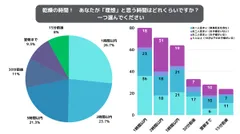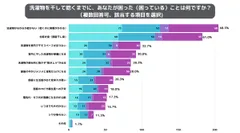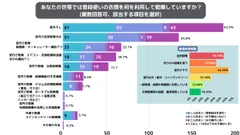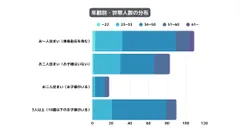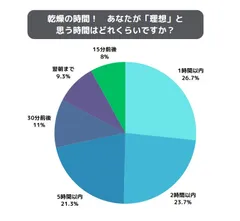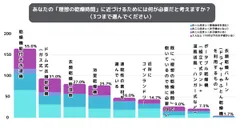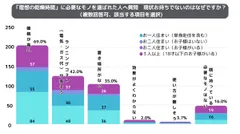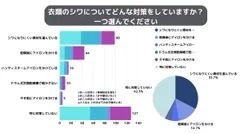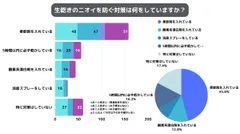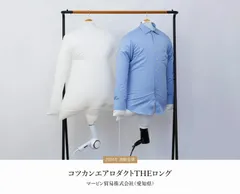Sei-katsu-sha Concerns about Laundry Drying in the Rainy Season "Ideal vs. Reality" Revealed Survey reveals a significant gap with reality
マービン貿易株式会社
Marvin Trading Co. (Head office: Owari-Asahi City, Aichi Prefecture; President: Kunitoshi Momota), which sells the "Clothes Drying Balloon" KOTSUKAN AERODUCT, a product that reduces the number of clothes changes, conducted a questionnaire survey of 300 households across Japan regarding the actual state of laundry drying during the rainy season. The results of the survey revealed that there is a large gap between the "ideal" drying time with current equipment and facilities, and that this is the main cause of various problems unique to the rainy season.
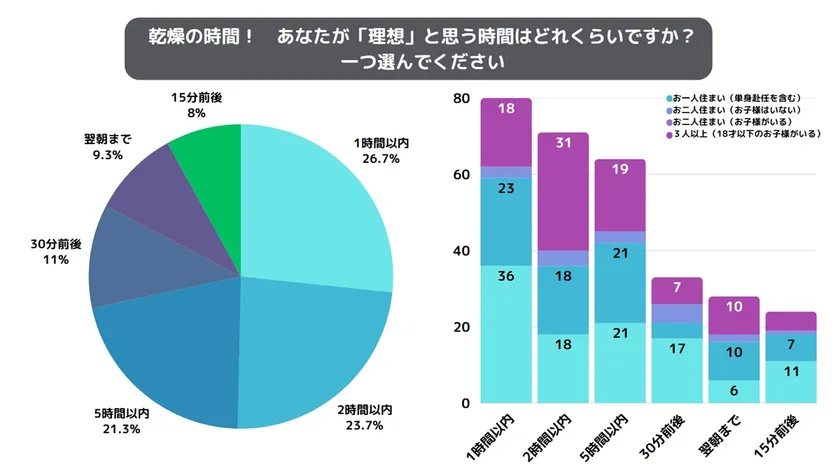
Ideal drying time during the rainy season
We also surveyed the equipment and facilities needed to achieve the ideal drying time, as well as the reasons why these are not currently being purchased or used.
The survey also highlighted trends in problems that are characteristic of different household compositions and situations.
What are the problems you face in hanging the laundry out to dry?
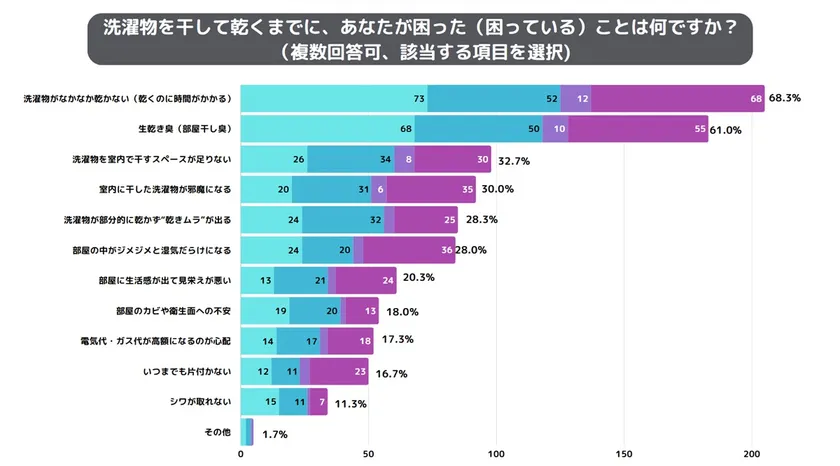
What are the things you have trouble with before your laundry hangs to dry?
Summary of Survey Results
The largest percentage of respondents (68.3%) felt that their laundry "does not dry easily (takes a long time to dry)," followed by 61.0% who were "concerned about the smell of fresh air (room-drying odor). In addition, 32.7% said they "don't have enough space to dry clothes indoors," followed by 30.0% who said "dried laundry gets in the way of living space. The humidity in the room increases, causing "dampness and discomfort" (28.0%) and the mental stress of "mold anxiety" (18.0%) were also cited by a large number of respondents.
The main concerns and response rates are as follows (multiple responses, in order of top to bottom)
Time consuming to dry: 68.3% (205 respondents)
Smell of freshly dried clothes: 61.0% (183 respondents)
Lack of space for indoor drying: 32.7% (98 persons)
Lack of space for drying clothes indoors: 32.7% (98 persons)
Uneven drying of laundry (laundry not drying in certain areas): 28.3% (85 persons)
The room is full of moisture: 28.0% (84 persons)
Room does not look good (gives a lived-in feeling): 20.3% (61 respondents)
Mold and hygiene concerns in the room: 18.0% (54 persons)
Worried about the increased burden of electricity and gas bills: 17.3% (52 respondents)
Uncleanliness of clothes left out to dry: 16.7% (50 persons)
Not being able to get rid of wrinkles in clothes: 11.3% (34 respondents)
These problems varied somewhat by family structure. For example, many single-person households and dual-earner couples said that "the smell of drying clothes indoors is a particular concern" and "there is not enough space to dry clothes indoors," while households with small children had a large amount of laundry, so problems such as "indoor drying takes up the whole room" and "uneven drying are a problem. In addition, while "slow drying itself is stressful" was a common concern among all groups, concerns about "mold in the room and hygiene" were slightly higher among families with elderly parents than among other groups. All of these groups have some dissatisfaction with laundry during the rainy season, indicating that the inability to dry clothes comfortably is lowering the quality of their daily lives.
What does your household use to dry their daily clothes?
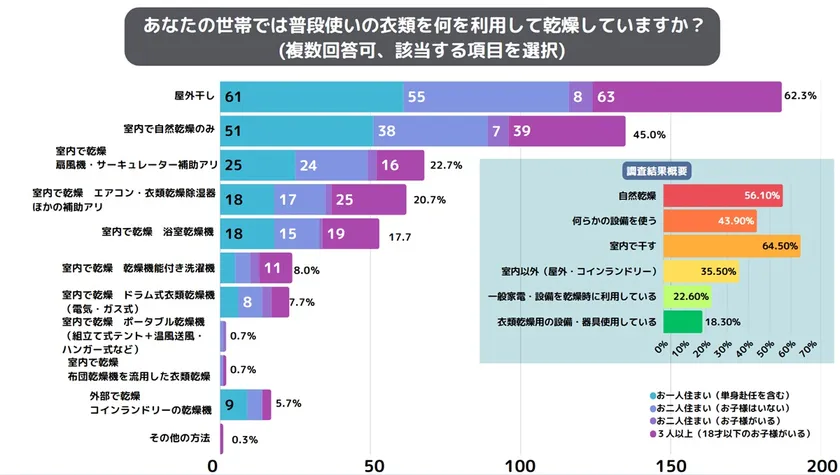
What do you use to dry your clothes?
■Survey Results Summary
(1) 56.1% dry clothes naturally, 43.9% use some kind of equipment or appliance
(2)64.5% dry clothes indoors overall, 35.5% use a method other than indoor drying (32.6% outdoors, 2.9% at laundromats)
(3) 22.6% use general household appliances and equipment for drying (air conditioners, fans, and circulators)
(4) 18.3% use equipment/facilities for drying clothes (bathroom dryers, drum dryers, etc.)
While more than half of the respondents still dry their laundry naturally, more than 40% use equipment or facilities to speed up the drying process, a trend that is likely to increase in the future.
Less than 20% of households still use equipment or facilities exclusively for drying clothes, giving the impression that the use of such facilities is still lagging behind the spread of drying, considering the magnitude of the problem of clothes not drying.
Outline of the Survey
Organization : Marvin Trade Corporation (Cooperated by CrowdWorks)
Period : May 11, 2025
Survey target : 300 general households nationwide
Breakdown : One-person households (including single-person households) 109 households, two-person households (no children) 83 households,
Two people (with children): 18 households, Three or more people (with children): 90 households
Survey Method : Attitude survey using an Internet survey
CrowdWorks URL: https://crowdworks.jp
Number of persons surveyed: 300
Sampling Method : Random sampling from Internet survey personnel
Respondents by sex and age
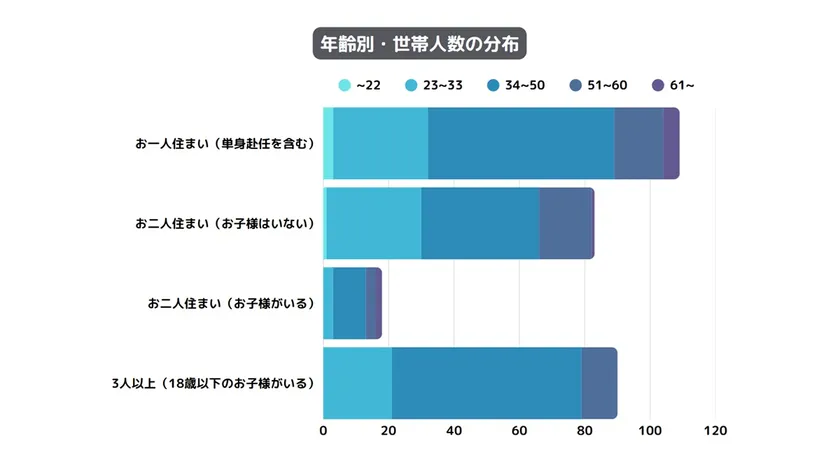
Age group and number of household members
What do you consider to be your "ideal" drying time?
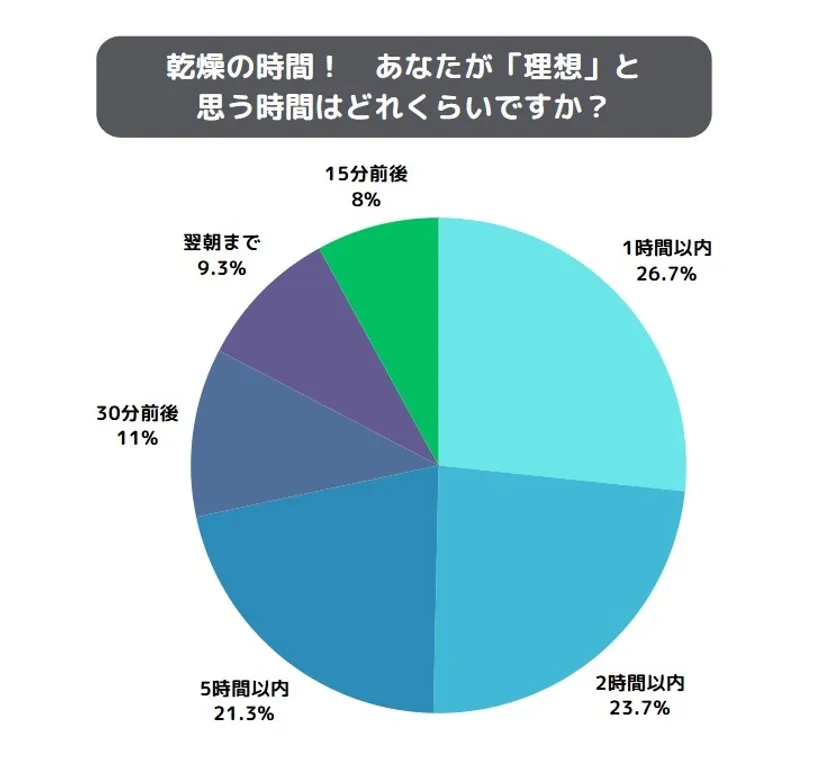
Ideal drying time
Summary of survey results
Approx. 15 minutes: 8
Approx. 30 minutes: 11
Within 1 hour: 26.7% ・Within 2 hours: 23.7
Within 2 hours: 23.7
A total of 69.4% consider 2 hours or less to be ideal.
Including those who answered "within 5 hours," more than 90% of the respondents said they could not wait even half a day, indicating that they were dissatisfied with the drying process and felt there was room for improvement.
What do you think is necessary to get closer to your "ideal drying time"?
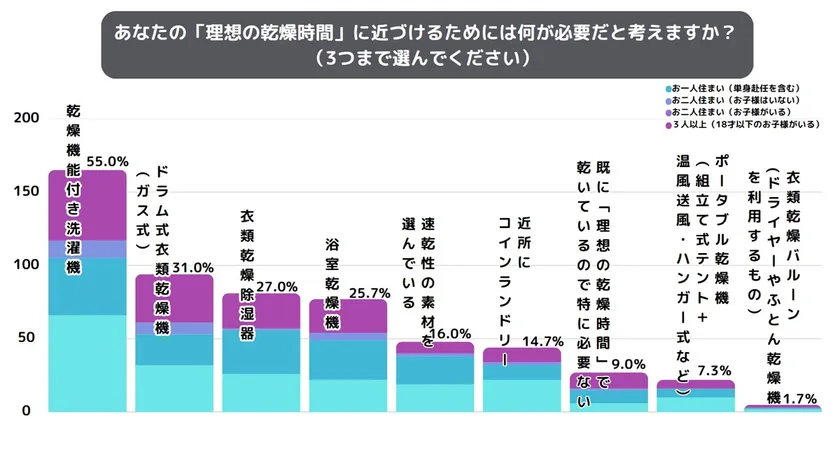
What do you think is necessary?
Summary of Survey Results
As expected, drum-type washing machines with drying functions are the most popular, with 55.0% of households saying they are necessary. This is followed by a drum-type clothes dryer at 31.0%, a clothes dryer/dehumidifier at 27.0%, and a bathroom dryer at 25.7%. Interestingly, 14.7% of households mentioned having a laundromat in the neighborhood.
9% of households indicated that they are already in an ideal situation for drying issues and may already be in a position to purchase and use the latest appliances.
Portable dryers and clothes drying balloons received the lowest response rates. Although there are products that can dry clothes in an overwhelmingly short amount of time, their low name recognition was conspicuous.
■Why don't you currently have what you need for "ideal drying time"?
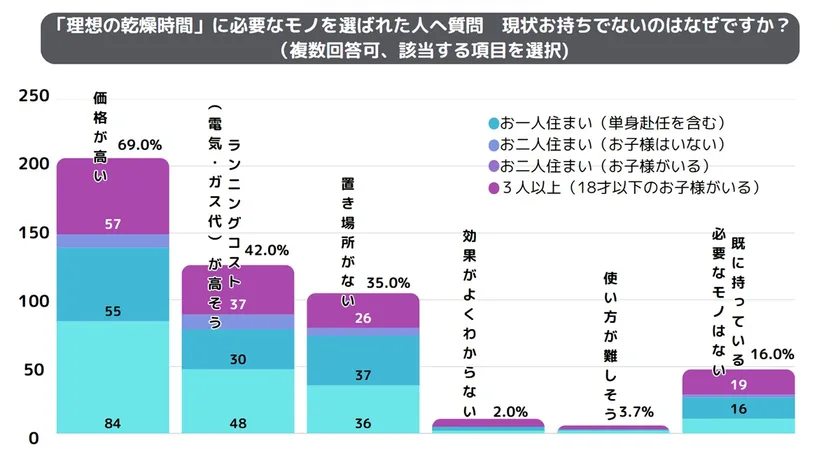
Reasons for not having it
Summary of Survey Results
When asked why they do not have the equipment and facilities they know they need, the overwhelming majority of respondents (69%) chose "Because they are too expensive. In addition, "Running costs (electricity and gas) are likely to be high" (42%) and "Lack of space" (35%) were also cited by many respondents, revealing that cost and space are the two major hurdles. It seems that the high hurdle of practical introduction is seen as a problem. In addition, 16% of respondents answered that they "already have/need nothing," indicating that about 80% of the remaining respondents would like to introduce some kind of remedial measure but have not yet done so.
■What measures are you taking about wrinkles in your clothes?
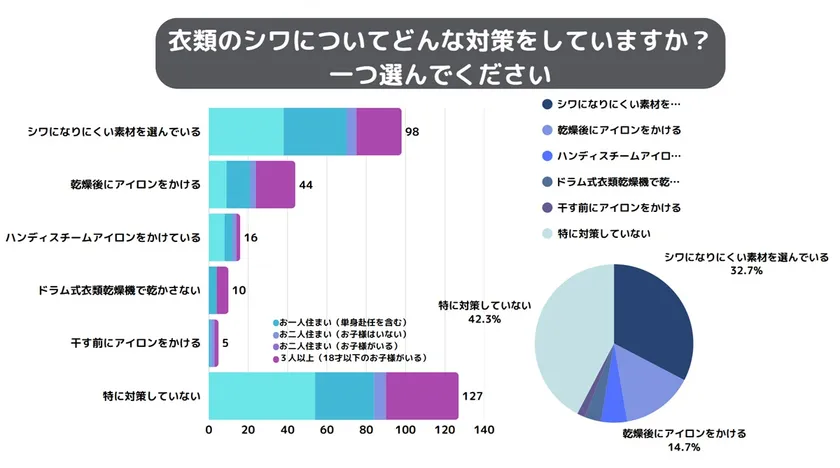
What measures are you taking to prevent wrinkles in your clothes?
Summary of Survey Results
No particular measures are taken: 42.3%, the majority of the respondents. This is thought to include giving up.
Selecting wrinkle-resistant materials: Washing non-ironing materials to avoid ironing.
Ironing after drying: The most reliable measure tends to be avoided by 14.7% of respondents.
■What measures do you take to prevent fresh-dried odors?
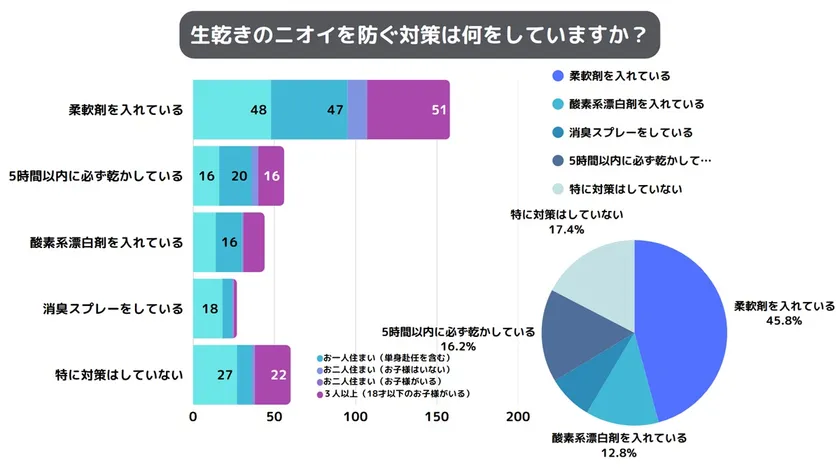
Measures to prevent odor
Summary of survey results
Adding fabric softener: 45.8%, nearly half of the respondents, considered this an easy countermeasure with great merit.
No particular measures: 17.4%.
Dry within 5 hours : 16.2%.
Conclusion
The survey revealed that, in addition to "not drying" and "smelly," "lack of space to dry" is a major source of stress for consumers, and that the ideal drying time is within 2 hours. The survey also revealed that the introduction of home appliances, which they hope to improve, has not been realized due to price, utility costs, and space limitations.
A number of free-response respondents also lamented about cost and space. One respondent said, "I used to have a washing machine with a drying function, but I stopped using it due to high electricity costs, and eventually replaced it with a washing machine without a drying function," and another said, "I have a drying function, but I am not using it because I am worried about the electricity costs. Thus, it appears that the high initial investment, the increased burden of utility costs, and housing conditions are the bottlenecks to solving the laundry challenge during the rainy season.
Even though portable dryers and clothes-drying balloons have the ability to achieve ideal drying times, the lack of awareness of these products was remarkable.
What is the "Clothes Drying Balloon" Kotsukan Aeroduct?
Despite its compact size (B5 size, 165g), the "Clothes Drying Balloon" can dry Y-shirts, socks, underwear, and handkerchiefs at the same time, in as little as 10 minutes, using a hair dryer at a hotel or at home. Although it was developed for travel, its high drying capacity makes it possible to alleviate the problem of not being able to dry clothes during the rainy season.
Travelers can reduce the number of changes of clothes by making it easier to wash and dry clothes in hotels. Travelers can travel light because they can reduce the amount of luggage they need to carry. In addition to reducing the burden on travelers, the system will also reduce the fuel consumption load of transportation, thereby reducing CO2 emissions and contributing to decarbonization.
December 3, 2024 OMOTENASHI Selection Gold Award for three consecutive years
KOTSUKAN AERODUCT THE Long
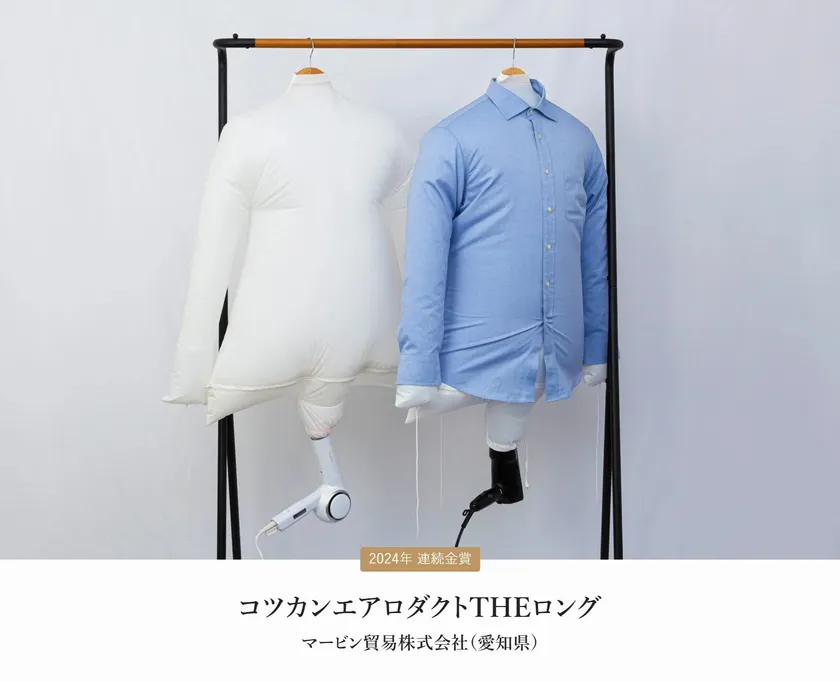
KOTSUKAN AERODUCT THE Long
Portable clothes drying balloon that reduces the number of changes of clothes Product Outline
Product name : KOTSUKAN AERODUCT THE LONG
Weight : 165g
Size : Compact size that can be stored in a B5 pouch
Sales Method : Amazon
https://www.amazon.co.jp/dp/B0BGDRCG9B
In-house EC site
https://marvin.co.jp/product/index.html
Capable of drying multiple garments in as little as 10 minutes using a hair dryer or futon dryer in a hotel or home. Has a wrinkle-removing effect.
≪About Marvin Trading Co.
Established in 1959 as an export trading company of western tableware and tiles.
Through many difficult environmental changes such as oil shocks, yen appreciation, and the Lehman Shock, the company has changed to its current business model of wholesale of general merchandise and daily necessities. Currently, we are focusing on direct sales of our own original products, which are greatly affected by the record-breaking depreciation of the yen, soaring raw material prices, and rising transportation costs.
■Company Profile
Company name: Marvin Trading Co.
Location: 6113-3 Mitsuike, Shiroyamacho, Owari-Asahi, Aichi, Japan
Representative: Kunitoshi Momota, President
Establishment: February 1959
URL : https://marvin.co.jp
Business description: Import and domestic wholesale of interior goods, daily necessities, interior materials, etc.
- Category:
- Research & Reports
